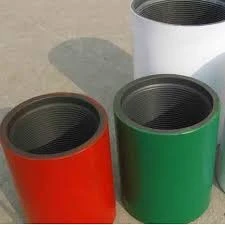- Afrikaans
- Albanian
- Amharic
- Arabic
- Armenian
- Azerbaijani
- Basque
- Belarusian
- Bengali
- Bosnian
- Bulgarian
- Catalan
- Cebuano
- Corsican
- Croatian
- Czech
- Danish
- Dutch
- English
- Esperanto
- Estonian
- Finnish
- French
- Frisian
- Galician
- Georgian
- German
- Greek
- Gujarati
- Haitian Creole
- hausa
- hawaiian
- Hebrew
- Hindi
- Miao
- Hungarian
- Icelandic
- igbo
- Indonesian
- irish
- Italian
- Japanese
- Javanese
- Kannada
- kazakh
- Khmer
- Rwandese
- Korean
- Kurdish
- Kyrgyz
- Lao
- Latin
- Latvian
- Lithuanian
- Luxembourgish
- Macedonian
- Malgashi
- Malay
- Malayalam
- Maltese
- Maori
- Marathi
- Mongolian
- Myanmar
- Nepali
- Norwegian
- Norwegian
- Occitan
- Pashto
- Persian
- Polish
- Portuguese
- Punjabi
- Romanian
- Russian
- Samoan
- Scottish Gaelic
- Serbian
- Sesotho
- Shona
- Sindhi
- Sinhala
- Slovak
- Slovenian
- Somali
- Spanish
- Sundanese
- Swahili
- Swedish
- Tagalog
- Tajik
- Tamil
- Tatar
- Telugu
- Thai
- Turkish
- Turkmen
- Ukrainian
- Urdu
- Uighur
- Uzbek
- Vietnamese
- Welsh
- Bantu
- Yiddish
- Yoruba
- Zulu
stainless steel reducer coupling
Understanding Stainless Steel Reducer Couplings A Comprehensive Guide
Stainless steel reducer couplings are crucial components used in various piping systems, both in industrial and domestic applications. These fittings enable the connection of pipes with different diameters, making them essential for efficient fluid and gas transfer. This article delves into the features, advantages, types, and applications of stainless steel reducer couplings.
What is a Stainless Steel Reducer Coupling?
A stainless steel reducer coupling is a type of pipe fitting that connects two pipes of different diameters. It typically has a larger diameter on one end and a smaller diameter on the other, allowing for a seamless transition in piping systems. The design of these couplings can vary, but they generally consist of a short piece of stainless steel pipe that is flared or tapered at both ends.
Advantages of Stainless Steel Reducer Couplings
1. Corrosion Resistance Stainless steel is renowned for its ability to resist corrosion, which makes it an ideal material for reducer couplings used in harsh environments. Whether exposed to moisture, chemicals, or extreme temperatures, stainless steel fittings maintain their integrity over time.
2. Durability Reducer couplings made from stainless steel are incredibly durable and can withstand high pressures and temperatures. This durability is vital in industrial applications, where equipment is subjected to rigorous conditions.
3. Ease of Maintenance Stainless steel fittings are easy to clean and maintain, which is essential for systems that require high hygiene standards, such as the food and beverage industry.
4. Versatility These couplings are available in various sizes and configurations, making them suitable for a wide range of applications, from plumbing systems to chemical processing plants.
Types of Stainless Steel Reducer Couplings
Stainless steel reducer couplings can be classified based on their design and application
. Here are a few common typesstainless steel reducer coupling

1. Concentric Reducers Characterized by a symmetrical design, concentric reducers have a circular cross-section and are often used in vertical piping systems. They provide a smooth transition and minimize turbulence, making them ideal for applications where pressure drop must be minimized.
2. Eccentric Reducers These are designed with an offset connection, allowing for a more horizontal flow in the piping system. Eccentric reducers are widely used in applications where air pockets need to be minimized, such as in drainage and wastewater systems.
3. Socket-Weld Reducers This type of coupling is permanently attached using a welding process. Socket-weld reducers are commonly used in high-strength applications where a solid connection is necessary.
4. Threaded Reducers These couplings have threads cut on both ends, allowing for easy connection to threaded pipes. They are convenient for applications where disassembly is required.
Applications of Stainless Steel Reducer Couplings
Stainless steel reducer couplings are used in various sectors, including
- Chemical Processing In chemical plants, these couplings facilitate the transfer of corrosive materials without risk of leakage or contamination. - Oil and Gas Reducer couplings are integral to oil and gas pipelines, ensuring safe and efficient transport of fuels and gases.
- Construction Used in plumbing systems, these couplings install necessary connections to ensure water and waste systems function correctly.
- Food and Beverage In breweries and distilleries, stainless steel reducer couplings help maintain hygiene while processing liquids.
Conclusion
Stainless steel reducer couplings play a vital role in modern piping systems by providing reliable connections between different pipe sizes. Their unique combination of durability, corrosion resistance, and versatility makes them a preferred choice in various industries. As the demand for high-performance piping systems continues to grow, understanding the significance and applications of stainless steel reducer couplings will empower professionals to make informed decisions about their piping needs. As a result, investing in quality stainless steel fittings is essential for ensuring the efficiency and longevity of piping systems across various applications.
-
Tubing Pup Joints: Essential Components for Oil and Gas OperationsNewsJul.10,2025
-
Pup Joints: Essential Components for Reliable Drilling OperationsNewsJul.10,2025
-
Pipe Couplings: Connecting Your World EfficientlyNewsJul.10,2025
-
Mastering Oilfield Operations with Quality Tubing and CasingNewsJul.10,2025
-
High-Quality Casing Couplings for Every NeedNewsJul.10,2025
-
Boost Your Drilling Efficiency with Premium Crossover Tools & Seating NipplesNewsJul.10,2025







